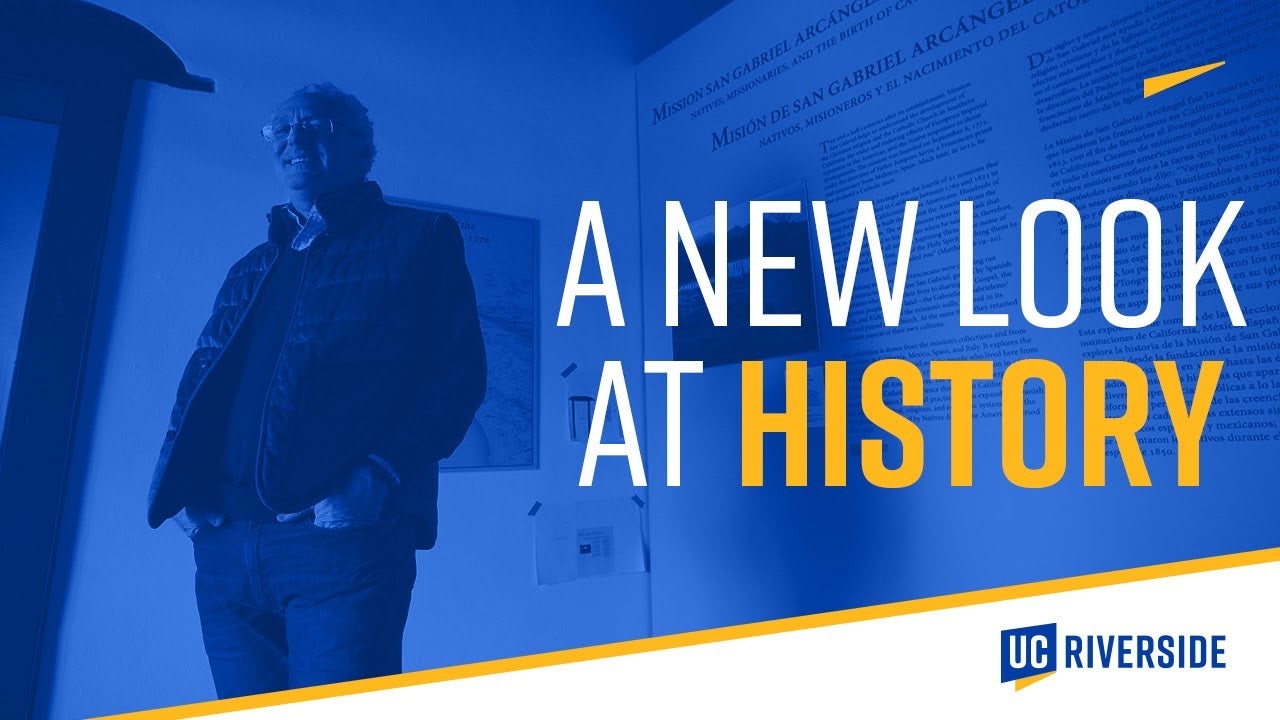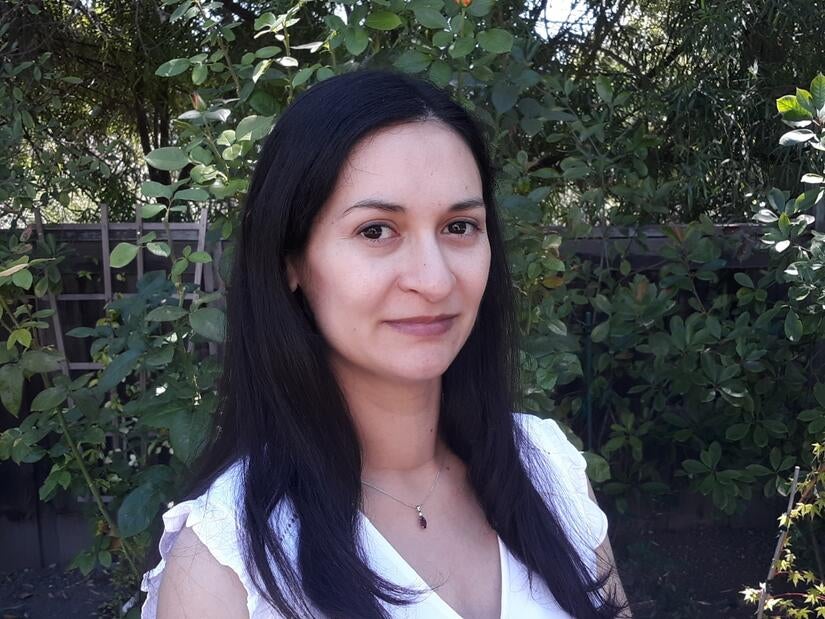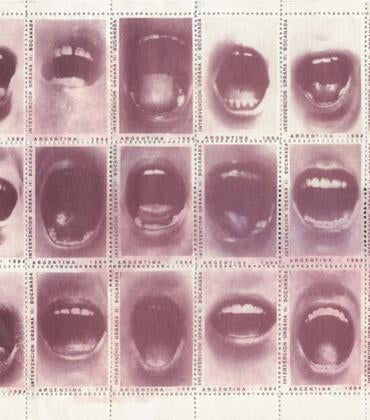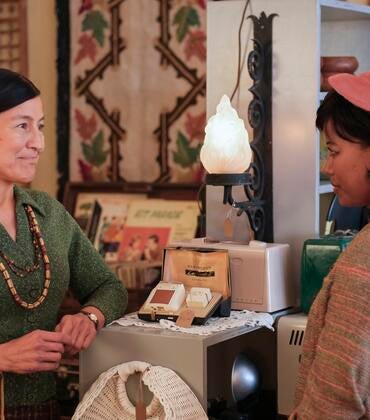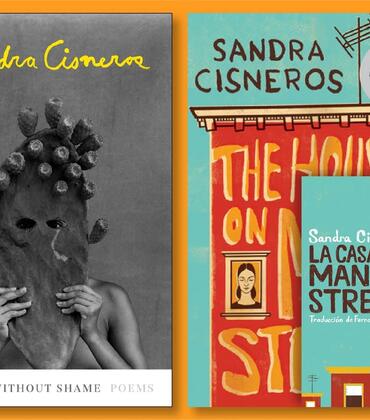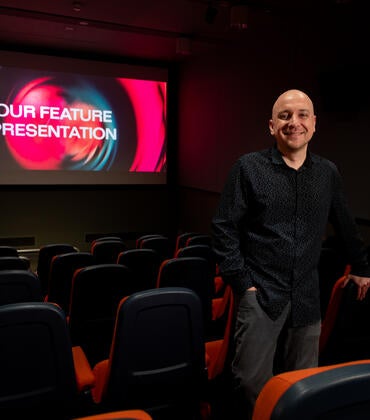The gray, black, and red letters printed on wallpaper gush like a waterfall flowing down a 16-foot white brick wall. They are a complete name list of 7,054 Native Americans who were once baptized at Misión San Gabriel Arcángel, more commonly known as Mission San Gabriel, in the city of San Gabriel, between 1771 and 1848.
The unveiling of this Wall of Names grants visitors first-time access and insight into the life and history of thousands of Indigenous people. It’s a memorial and the heart of the newly reimagined Mission San Gabriel Museum, which opens to the public on July 1 after a three-year closure caused by the COVID-19 pandemic and a 2020 fire that consumed the mission’s roof, interior, and imperiled the mission’s entire historical collection.
The museum’s new exhibition, “Mission San Gabriel Arcángel, 1771-1900: Natives, Missionaries, and the Birth of Catholicism in Los Angeles,” also coincides with the mission’s reopening. This is the culmination of a multi-year effort to engage Native consultants and a range of experts in the research, interpretation, conservation, and presentation of the history of Mission San Gabriel.
The mission, built by Native labor, is the site of 5,600 Native American burials, and is a place of profound Native memory and religious observance. However, Native voice, knowledge, and history until now have never been incorporated into the mission museum’s curatorial practices or gallery displays. This exhibition, therefore, seeks to acknowledge a 250-year-long erasure of the mission’s Native history and to displace a Eurocentric understanding of the legacies of Spanish colonization and Catholic missionization.
The integration of Indigenous and Catholic church histories is a first for the mission, thanks to exhibition lead curator, Steven Hackel, a University of California, Riverside history professor who worked alongside a team of collaborators, including associate curator Yve Chavez, a Gabrieleno/Tongva San Gabriel Band of Mission Indians member and assistant professor of art history at the University of Oklahoma.
“We used to have a story focused on the missionaries of this area. Now we brought as much as we could of Native people, mainly the Gabrieleño community, who along with other Indigenous groups had lived in these lands for more than 10,000 years prior to the colonization period,” said Hackel, who secured several grants, including $25,000 from the National Trust for Historic Preservation and $30,000 from the California Bishops Council to help cover costs. “I think what’s been unusual here — and both challenging and exciting — has been our work to create a narrative of the mission’s history that honors and reflects diverse interpretations of the history of the mission and its many legacies. The reopening of the museum is the culmination of a productive dialogue between the Archdiocese of Los Angeles, the Gabrieleño community, historians, curators, and a group of experts who helped us evaluate the mission’s collection and present it in a responsible and respectful manner.”
Mission San Gabriel, founded by Spanish Franciscans in 1771 as a small outpost in what is now Whittier and moved to its present-day location in 1775, is the fourth of the 21 Catholic California missions and a primary force behind the foundation of what is now the city of Los Angeles.
For Hackel, historical facts are crucial components of telling a more comprehensive history. Part of his motivation on the project has been to make more widely known the importance of Native and Spanish colonial history in San Gabriel Valley, and the need for people to realize that American colonial history is not something that happened 3,000 miles away on the East Coast and culminated in the American Revolution but rather was “an everyday occurrence here for Native people beginning more than 250 years ago,” Hackel said.
Franciscans documented every baptism, marriage, and burial they performed at Mission San Gabriel, records that descendants now can consult to learn about their ancestors. Over many years, researchers incorporated these records and those of other California missions into a searchable database, the Early California Population Project (ECPP). Records indicate that an estimated 90,000 Native people came to California’s 21 missions at some point. At the time the Spanish arrived in California in 1769, the Gabrieleño population stood at 5,000.
Mission San Gabriel was also the spiritual home to the thousands of settlers who came to Southern California. It was where thousands celebrated their most important family milestones — the births, marriages, and burials of loved ones — and where they regularly came to attend Mass.
The 1,100 square foot museum includes seven galleries and a 100 square-foot building across the museum breezeway that focuses on the contemporary Gabrieleño community.
“This space features a video slideshow intended to drive home the point that the Gabrieleno are still here and always have been,” Hackel said.
Museum visitors will experience 36 reproductions, two videos, five infographics, 30 original artifacts, and 12 audio components. The audio features a contemporary reading of the interrogation and testimony of Toypurina, a Native woman arrested and jailed during an attempted 1785 Native rebellion at the mission. It was voiced by actors from the Autry’s Native Voices theatre group.
The audio also includes 18th century music composed for the California missions and performed by USC Thornton Baroque Sinfonia, directed by Adam Knight Gilbert, as well as readings from the letters of the recently canonized California missionary St. Junípero Serra. At another part of the museum guests can scan a QR code to listen to Andrew Morales, a member of Gabrieleno/Tongva San Gabriel Band of Mission Indians pronouncing words recorded in what is the earliest vocabulary of one of the Native languages spoken at Mission San Gabriel. Visitors can also hear a recording of a Chumash man singing a 19th century song in Gabrieleño language.
“What we are trying to do here is present a more inclusive and multivocal history, foregrounding the Native experience at the mission because until now it was merely a backdrop for the missionary’s lives here,” Hackel said. “While the former mission museum did have a narrative it was largely a story of Franciscan piety and sacrifice in service of the conversion of Native peoples to Catholicism. We know the full story is more complicated and at times deeply unsettling when it comes to acknowledging the forced labor, corporal punishment, population decline, and other hardships Indigenous people suffered at Mission San Gabriel.”
Among the museum’s historical treasures on display are a 1775 confessional booth; a 1770s silk beaded, rose-colored chasuble woven in China and designed in Mexico by liturgical authorities — likely worn by St. Junípero Serra during one of his visits to the mission; religious paintings created by leading artists of 17th and 18th century Mexico, and a unique set of Stations of the Cross from the 19th century.
Chavez, the exhibition’s associate curator, said that prior to 2020, her community and other Indigenous peoples had very little representation in the museum. For the past year she and Hackel have worked together, along with Diocesan officials, to offer museum visitors a story that better integrates all histories.
One of the highlights for Chavez is knowing that members of the Native community participated in this historic project, she said.
“We are not a federally recognized tribe, so the mission is an important space for our history and community,” Chavez said. “We are still part of a living community, with many of our members still active Mission San Gabriel parishioners. Through this exhibition we also want to give non-native audiences a look at how many people were here and hope they walk across the breezeway from the main museum to the building where community photos are on view to see we are still here, living in our neighborhoods and communities.”
Visiting Mission San Gabriel Museum
Public opening: July 1
Location: 428 S. Mission Drive, San Gabriel, CA 91776
Museum website, dates, and times: Mission San Gabriel Museum
